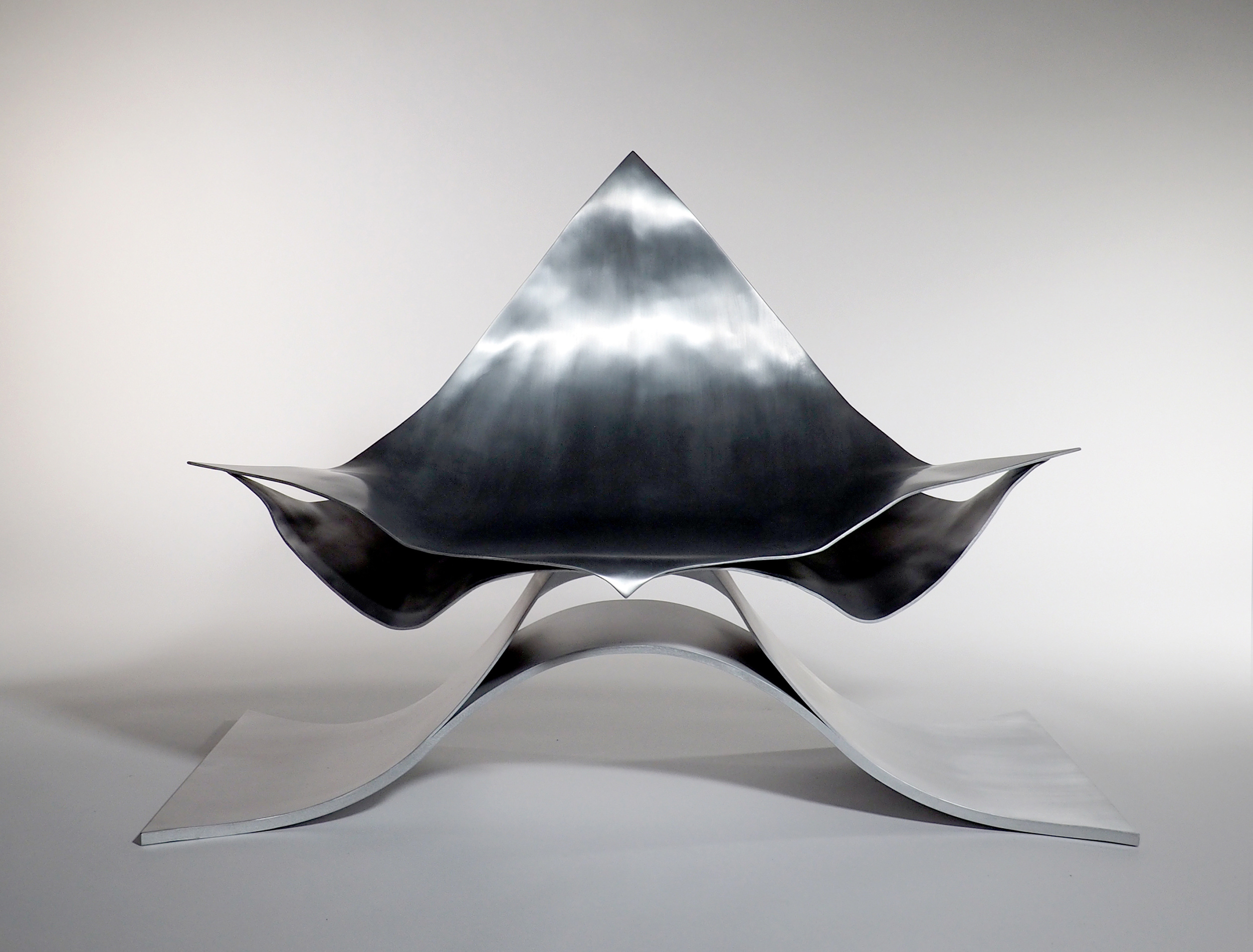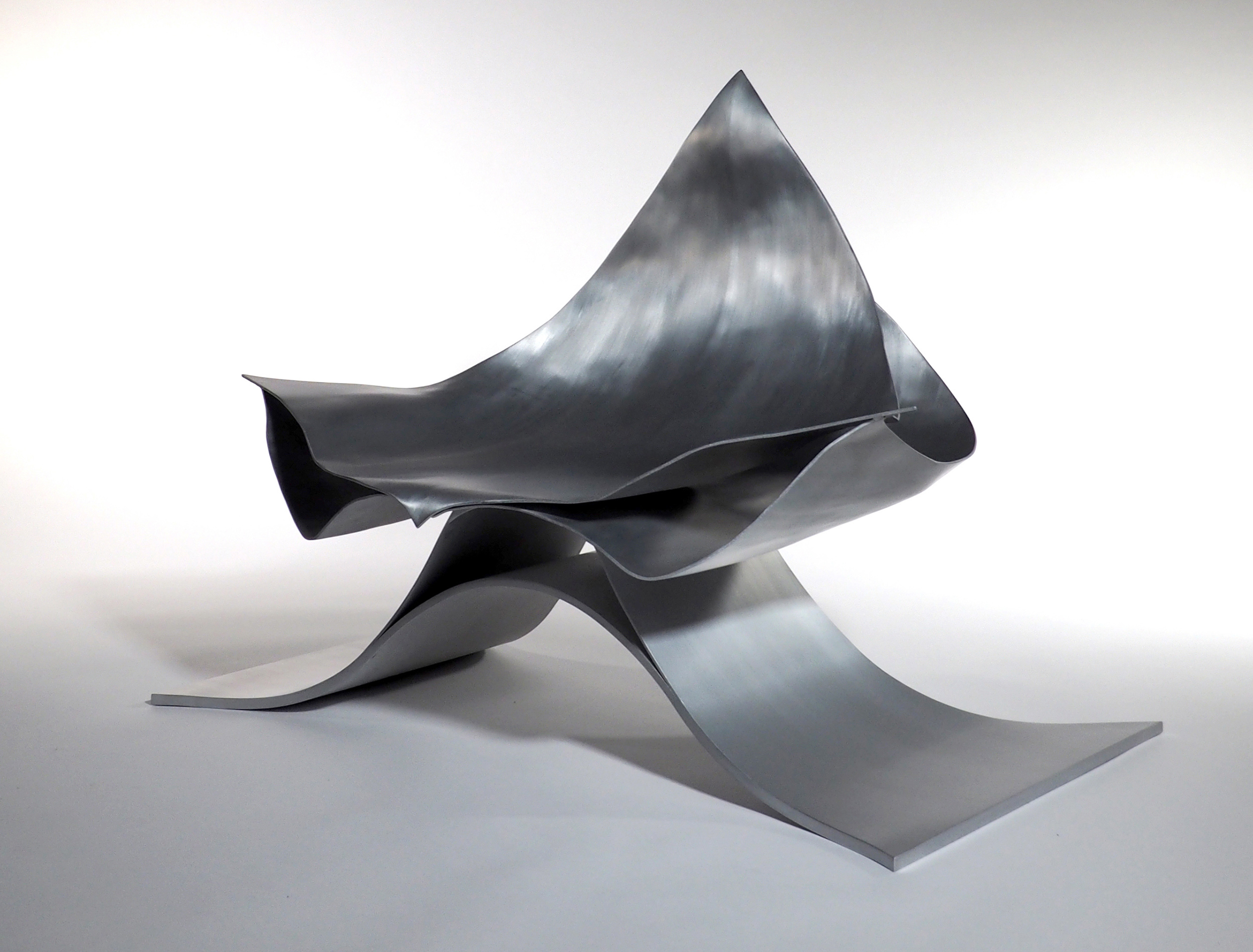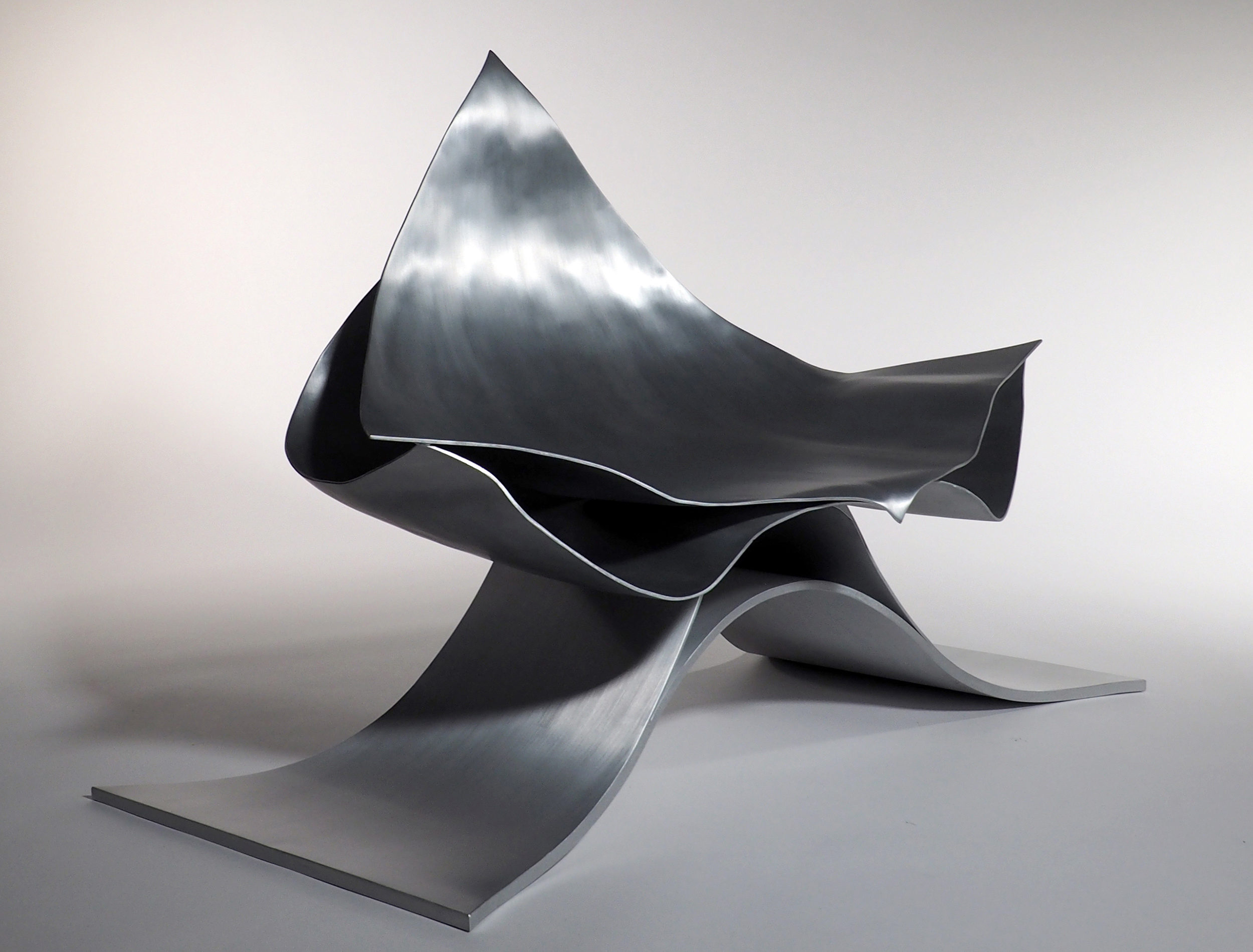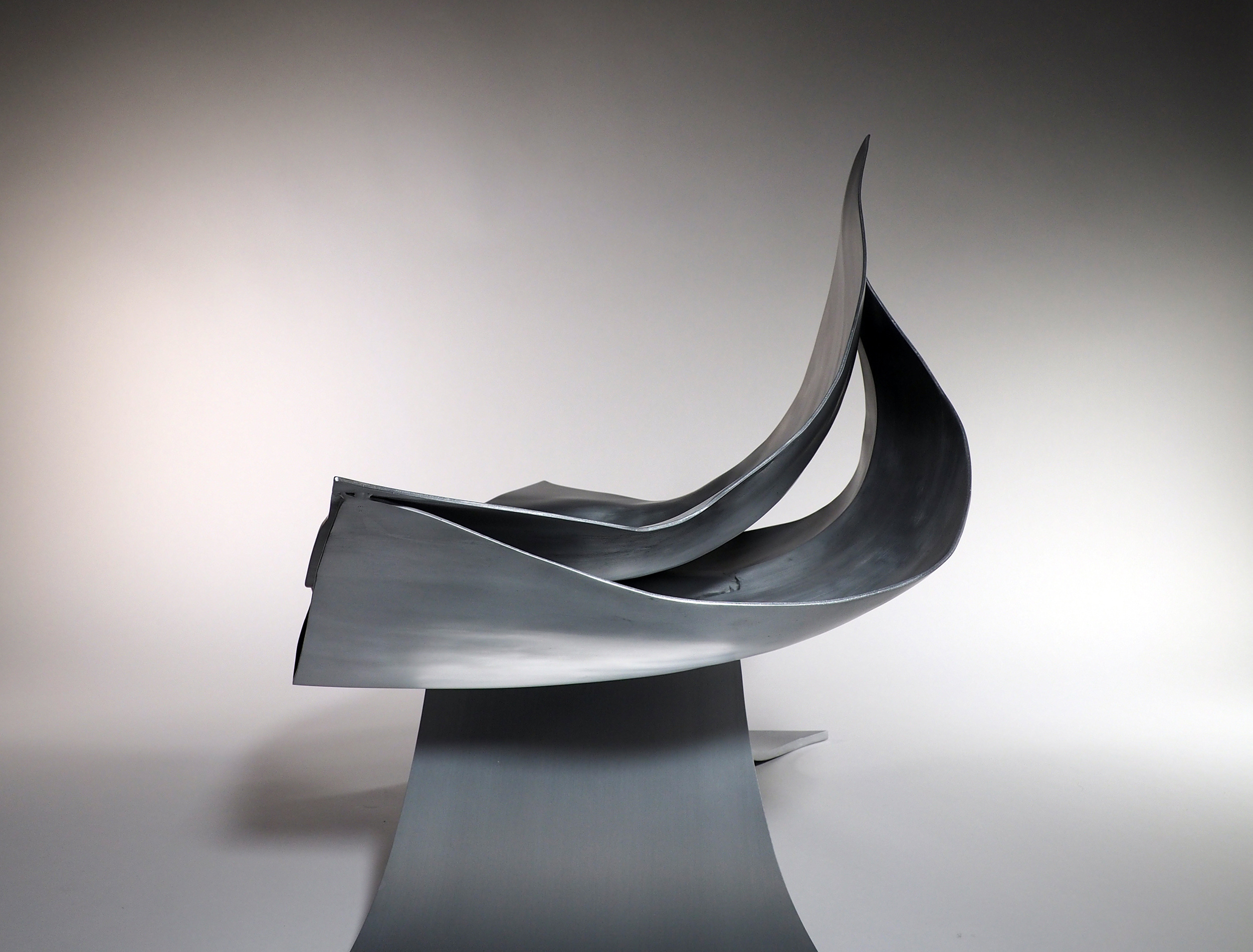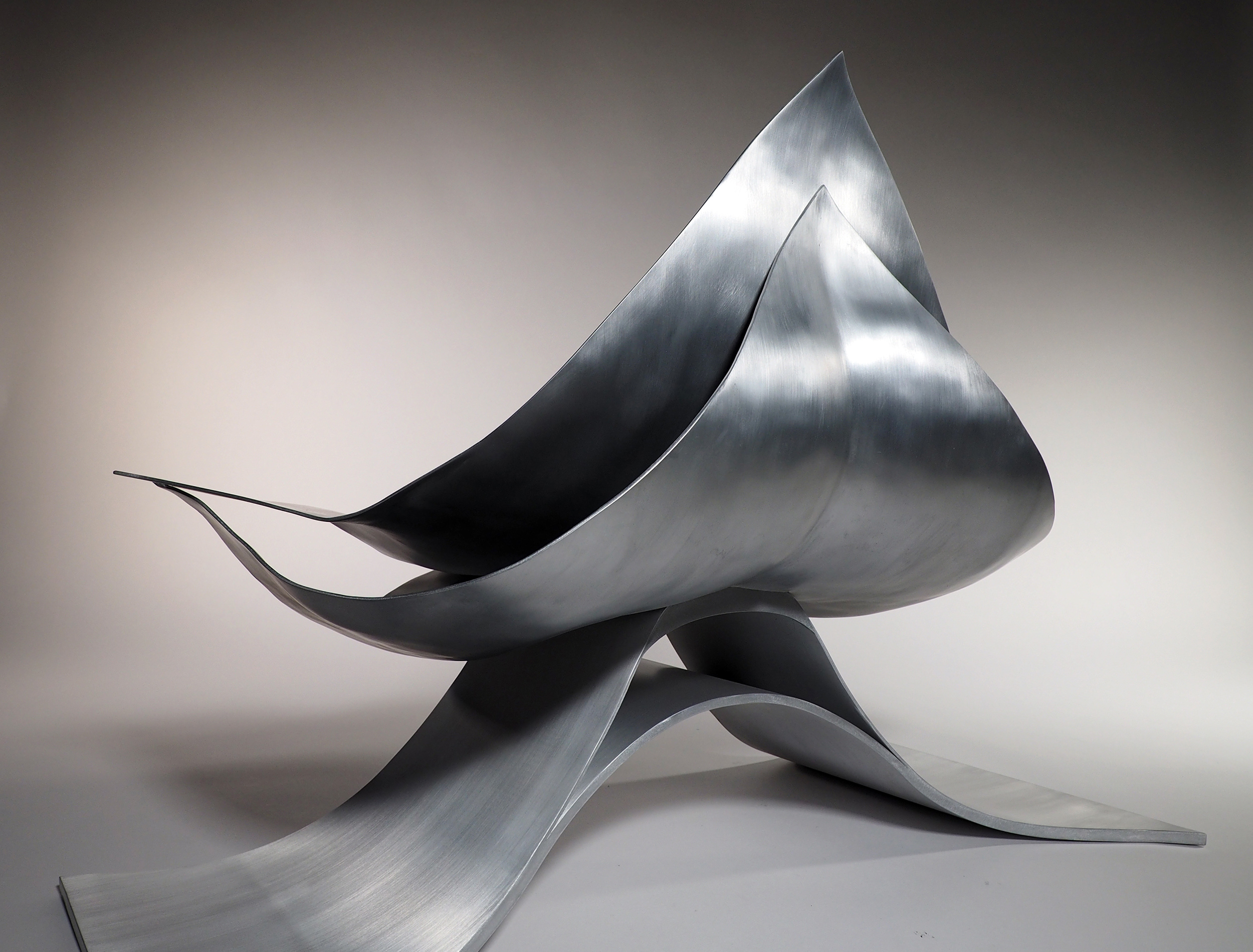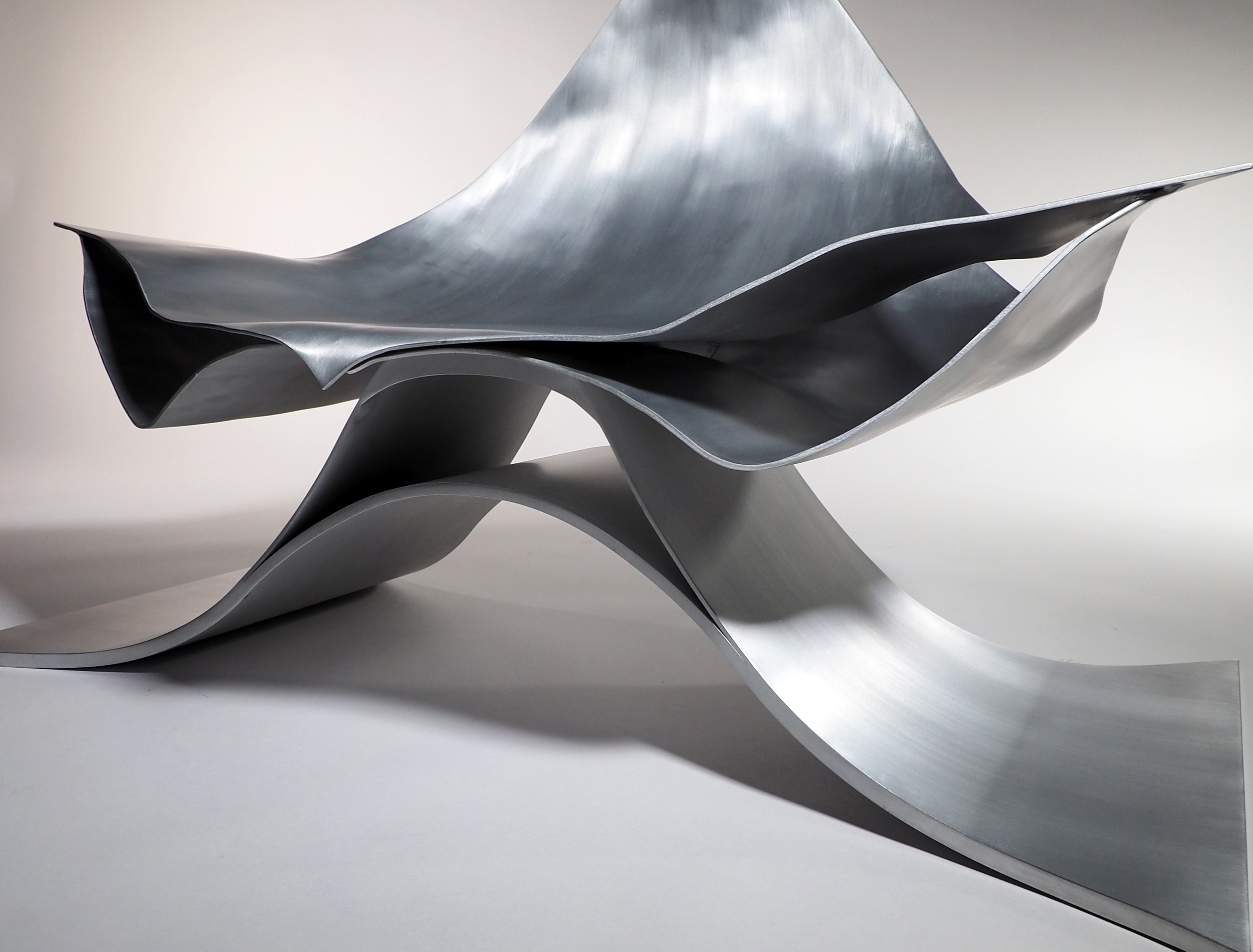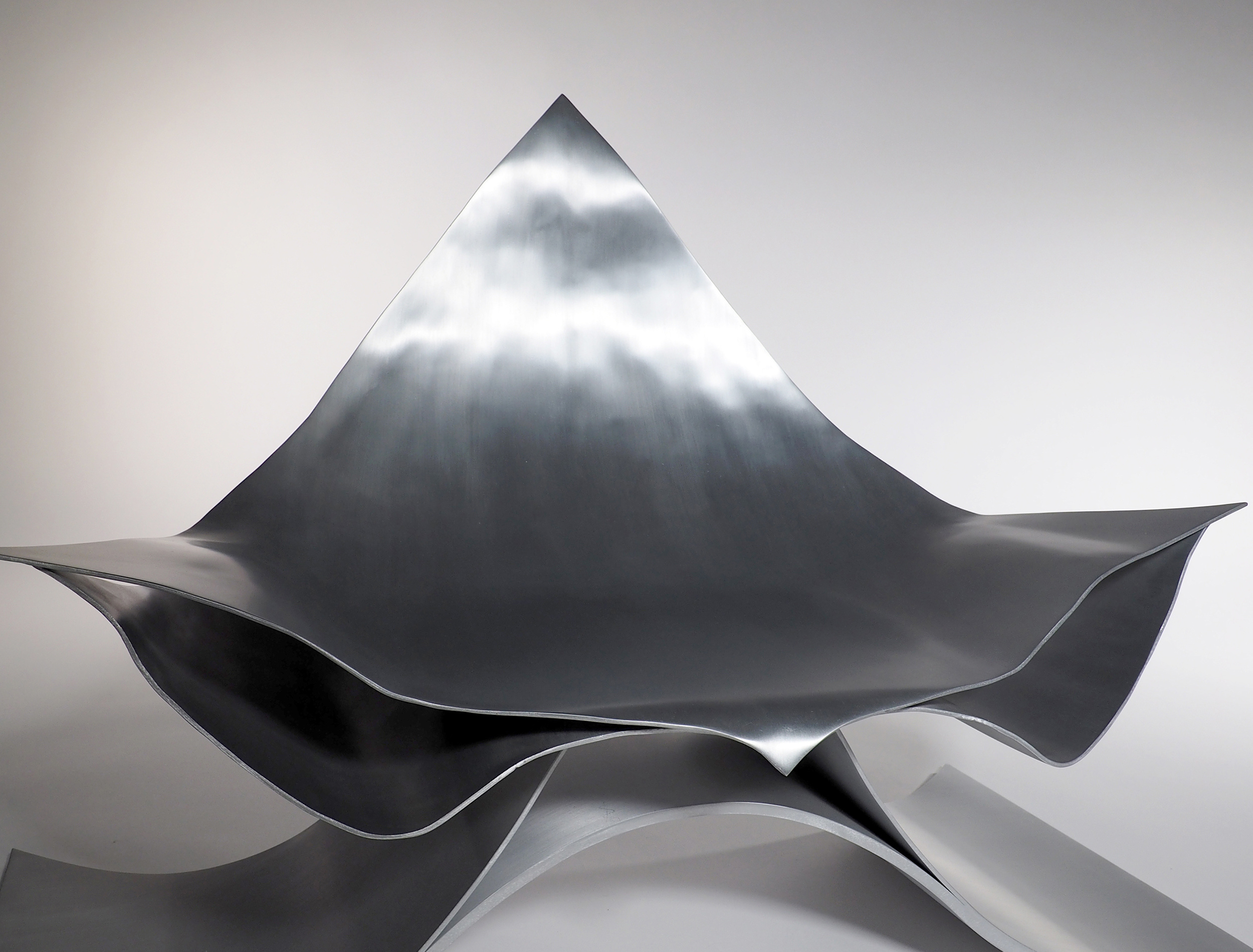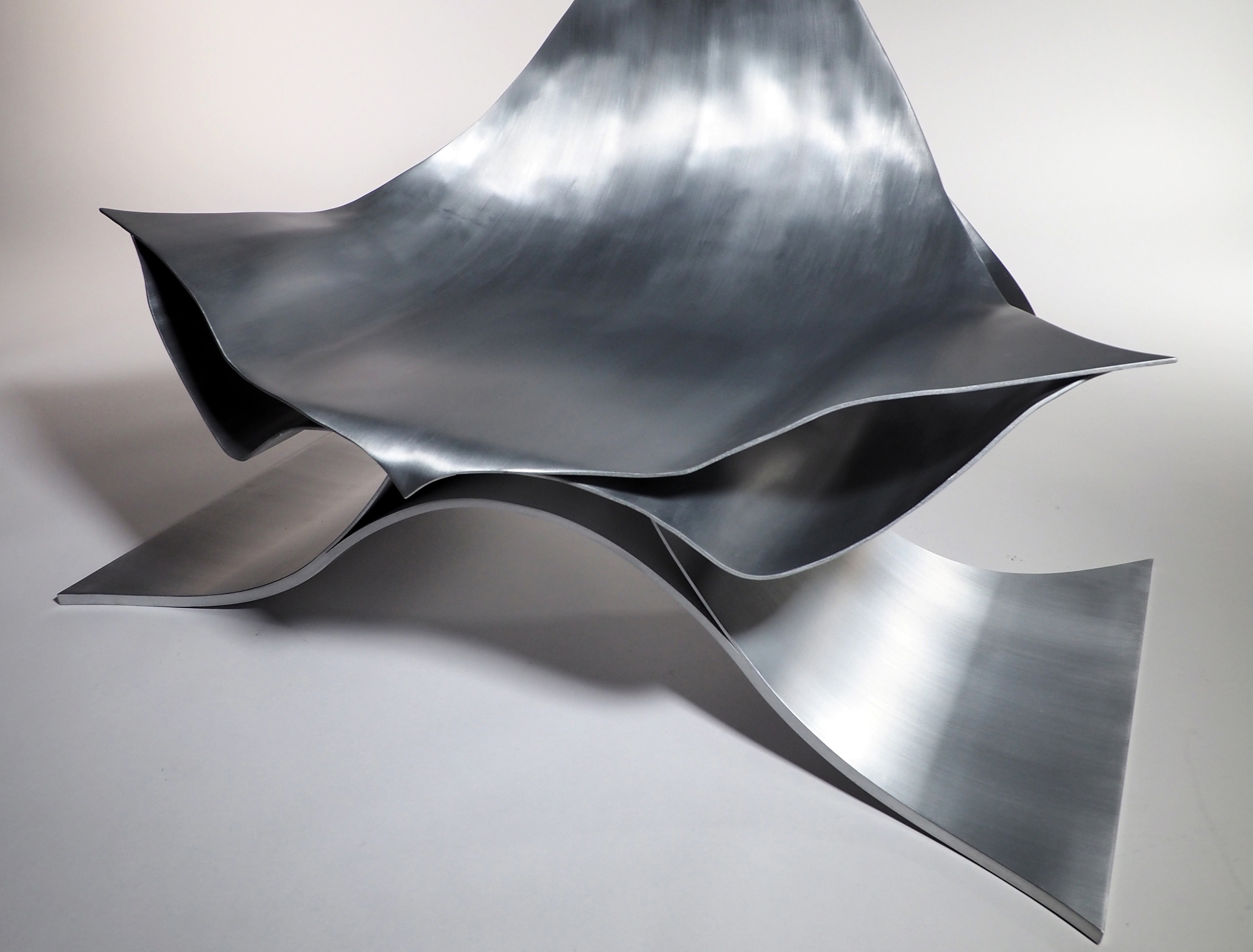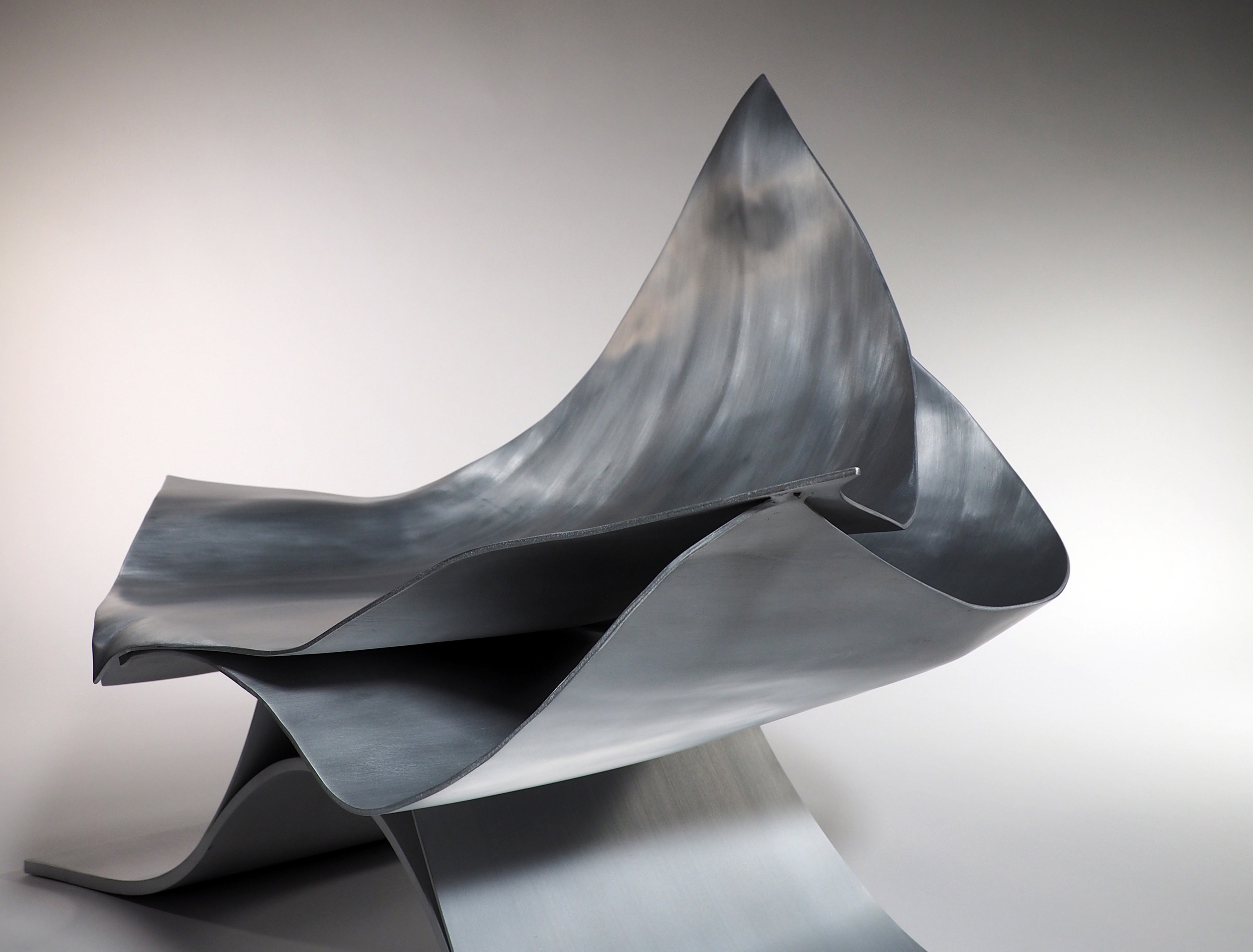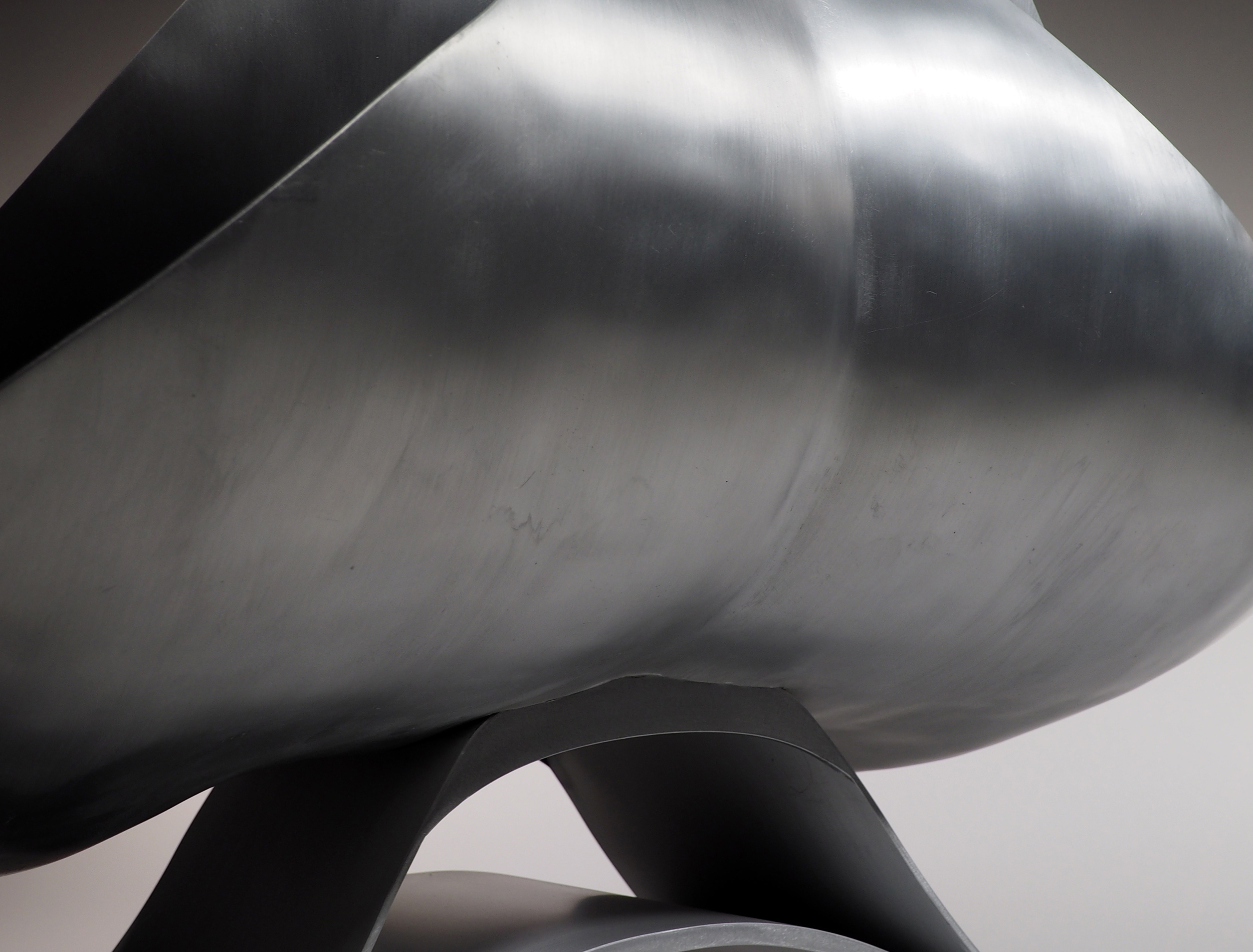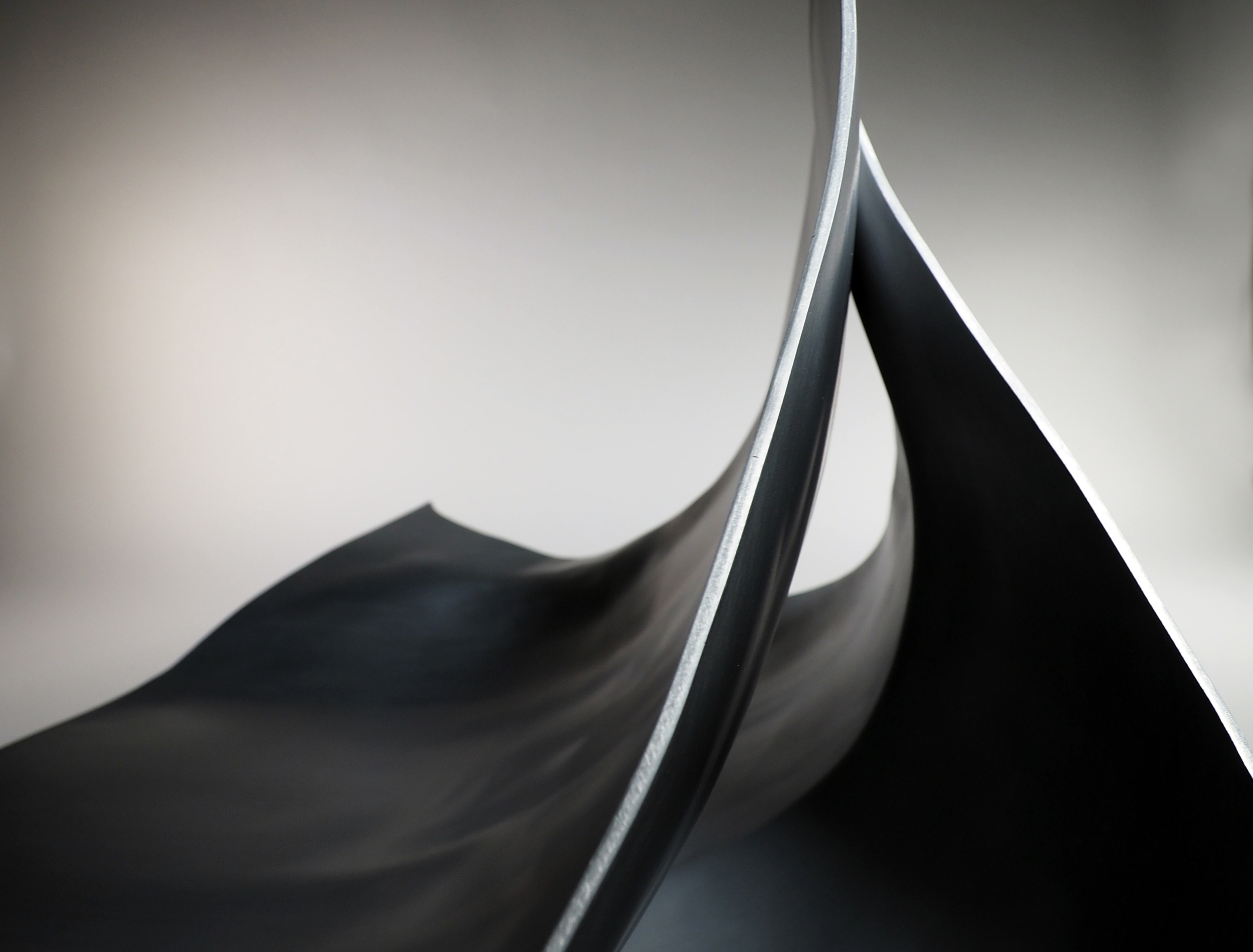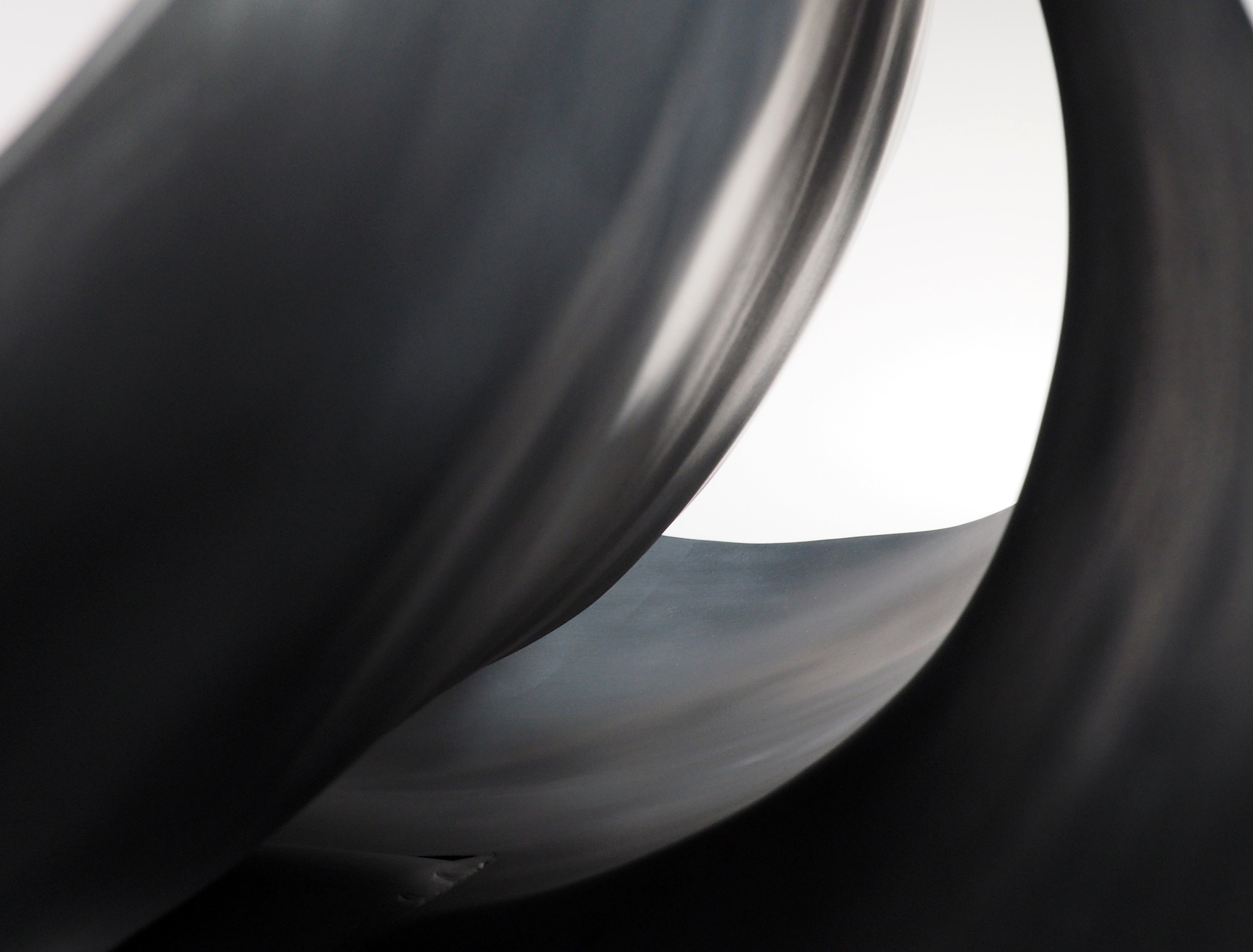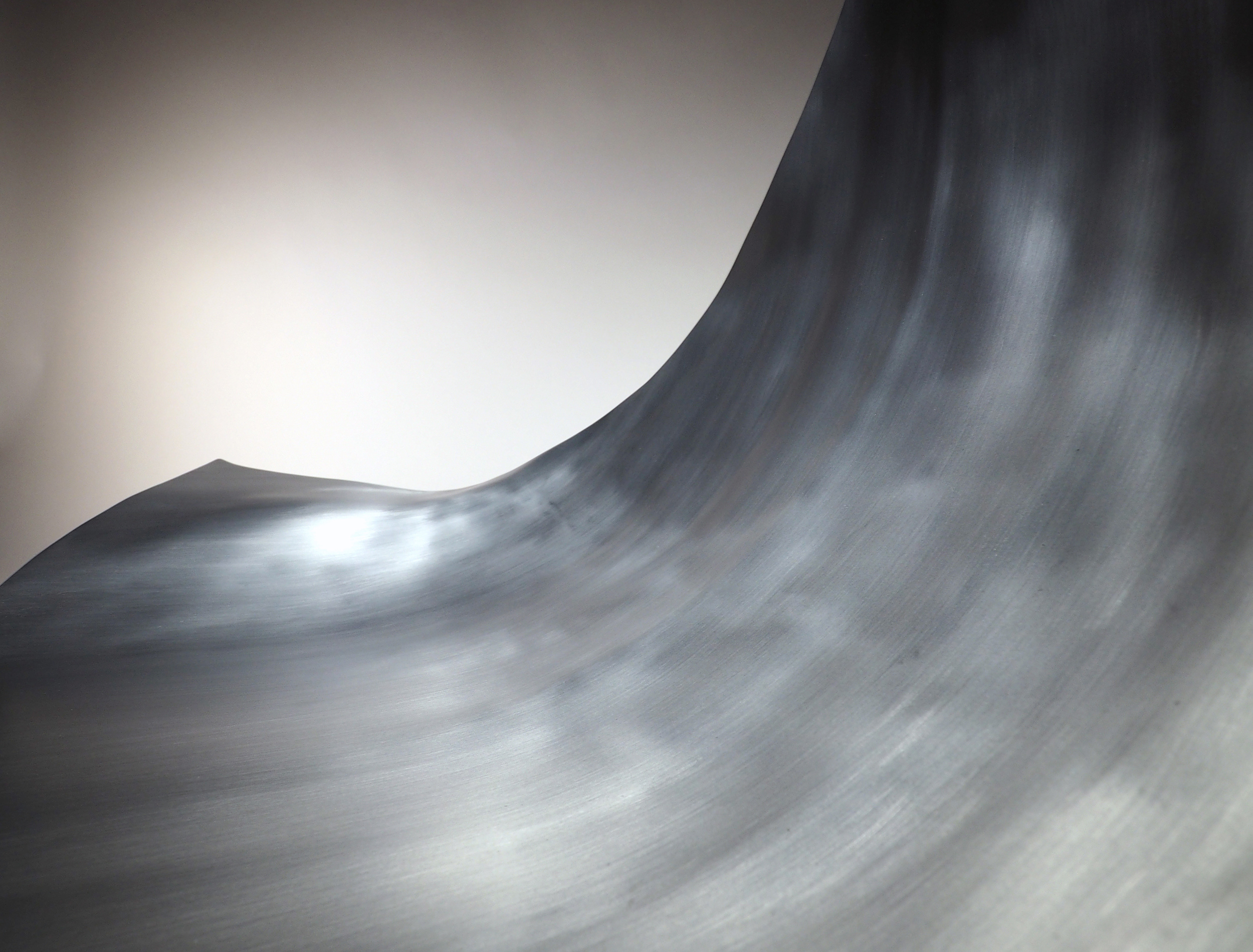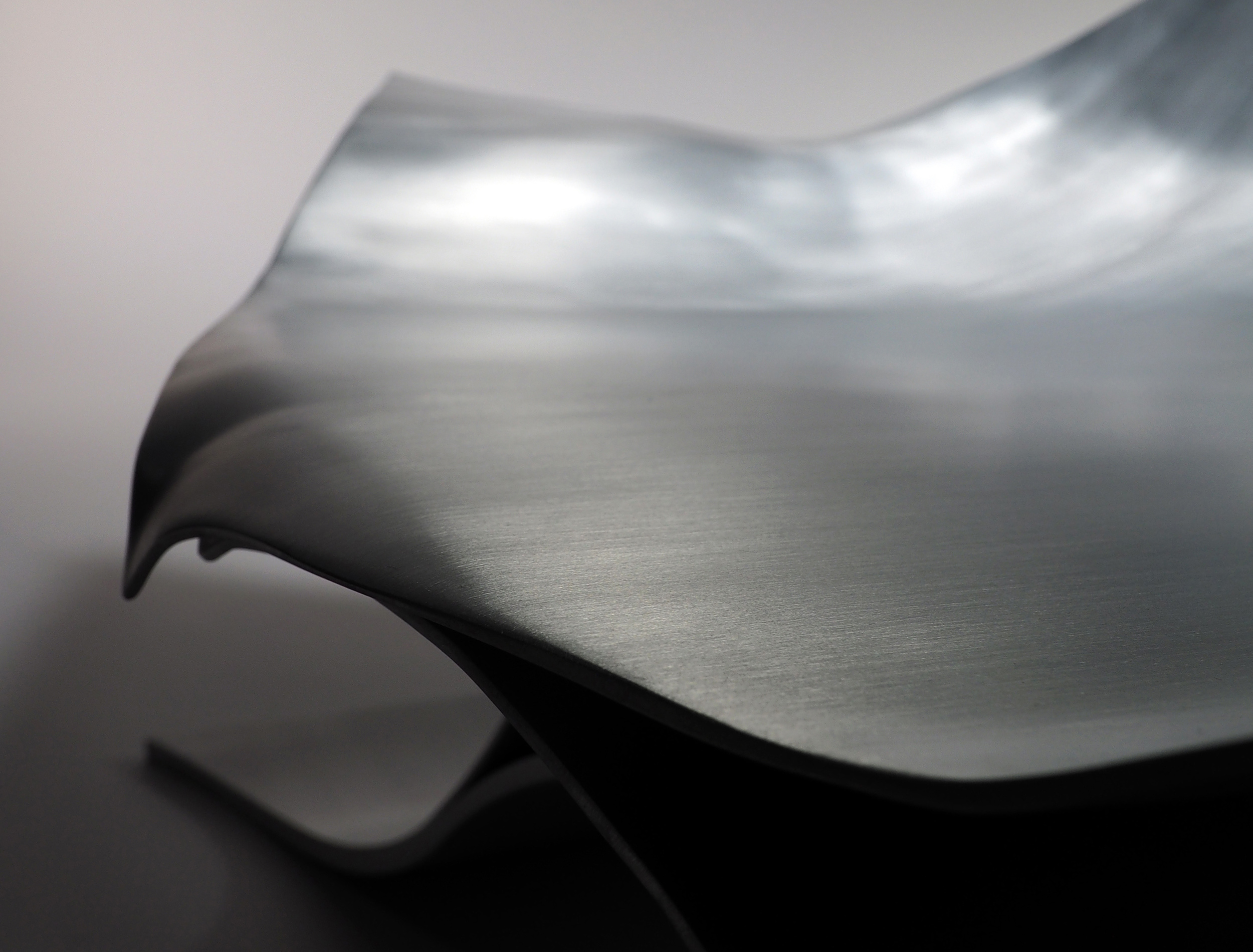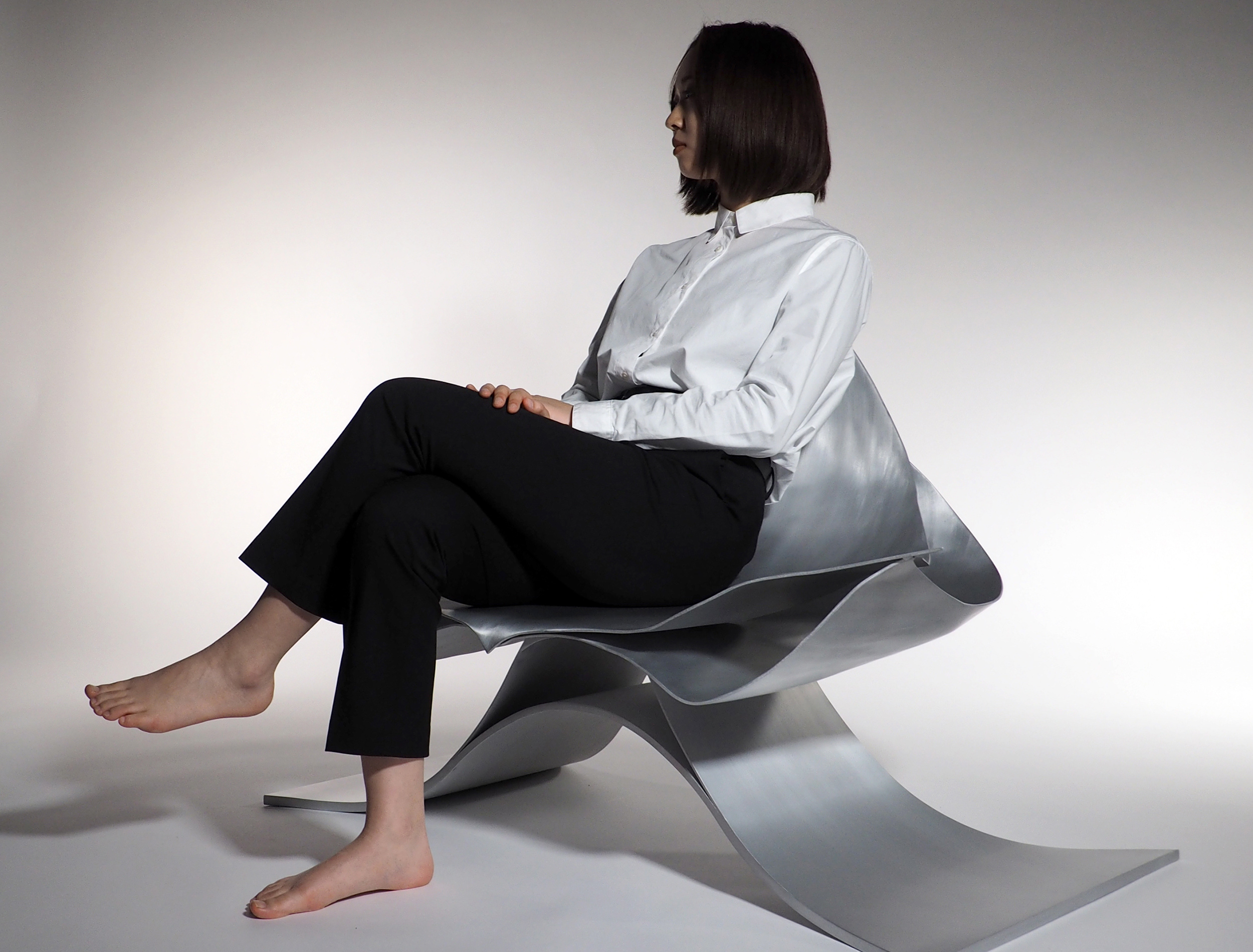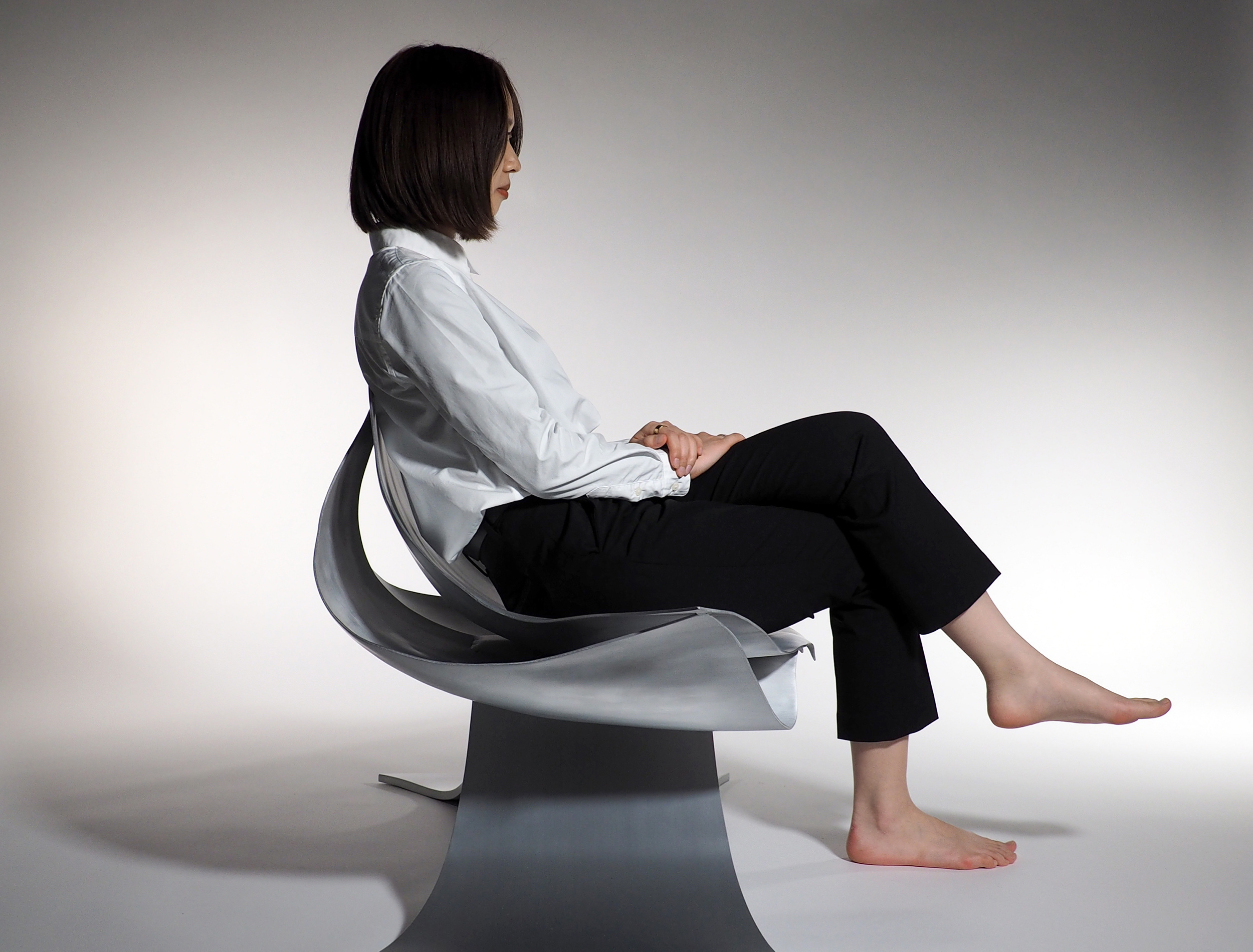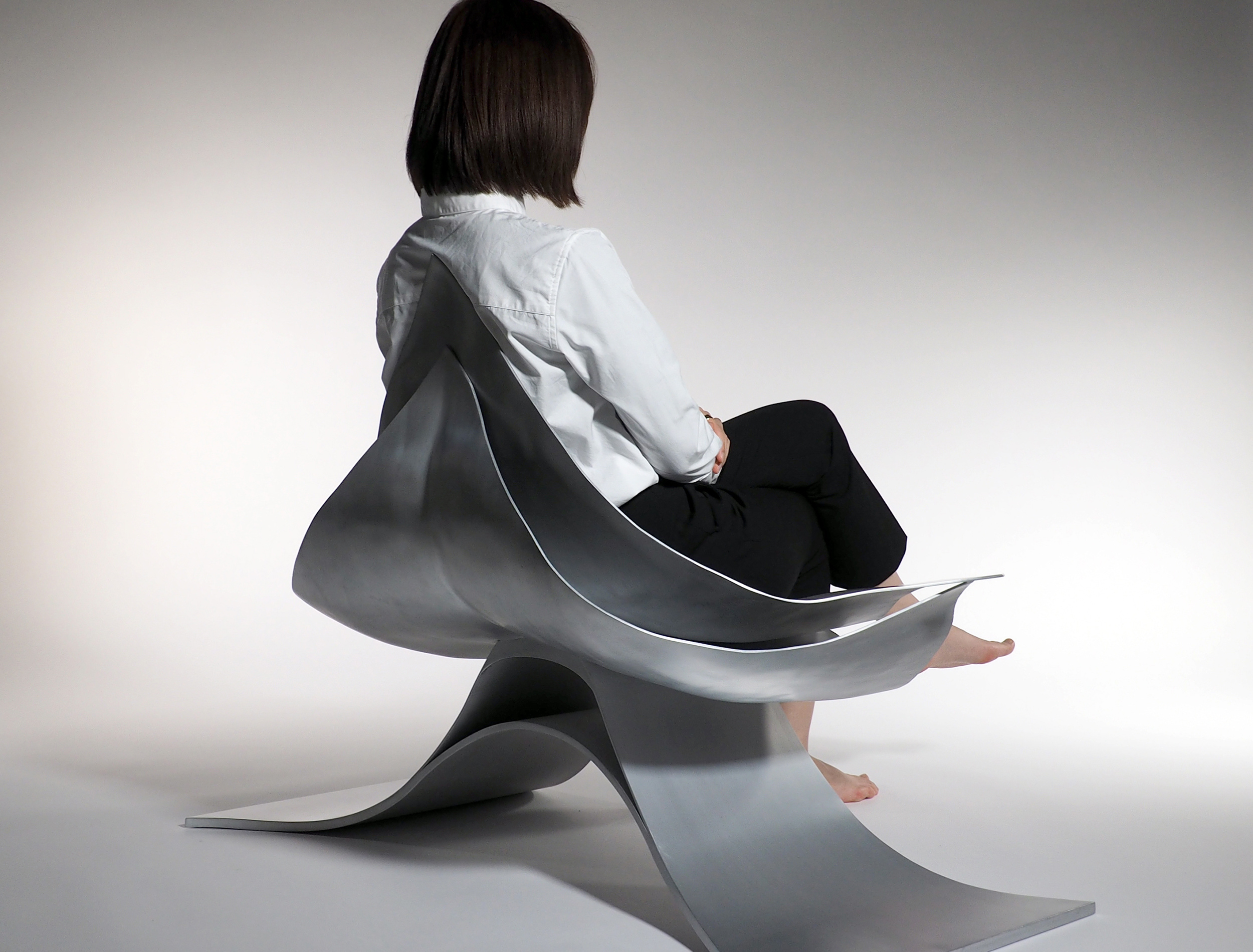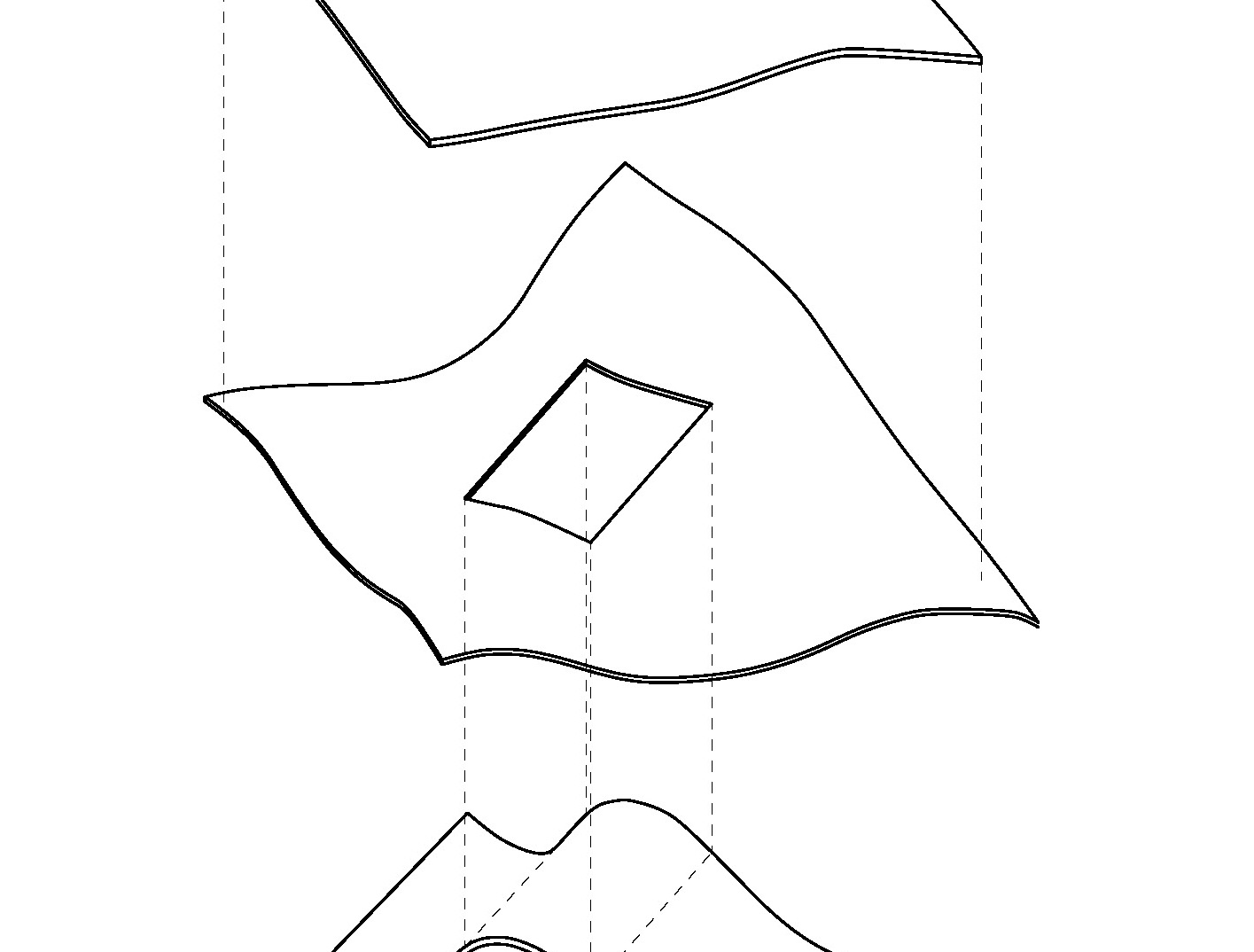
Shades of "X"
2021
建築ファサードの分野で世界的に有名な菊川工業株式会社と製作しているアルミニウムを使用した実験家具の三作目である。
アルミニウム板を三次曲面加工することで生まれる表面の流れるような表情は、実に美しく、優しい表情をもっている。この美しさと優しさを保ちながら、薄いアルミニウム板を最小限重ねることで、100kgの重さにも耐えられるラウンジチェーが出来ないかと思った。
このラウンジチェーは、3つの薄いアルミニウム板のパーツから出来ており、座面とその下の2枚目のアルムニウム板は4mm厚を三次曲面加工して製作し、3枚目となる脚は4mm厚、10mm厚のアルムニウム板を二次曲面加工し、溶接したものである。また、2枚目の座面下部に穴を空け、脚を貫通させて、1枚目の座面と脚を座面下でボルト留めしている。座面とその下のアルミ板は左右両端の肘掛下のみで溶接しているが、2枚目のアルミ板と脚は溶接していない。そうすることで、座面と脚は着脱可能となる上、人が座る際に掛かる荷重に追随しながら全体として安定した構造となる。
This is one of a series of experimental furniture projects using aluminum sheet produced Kikukawa Kogyo Co., Ltd., who is a metal architecture expert in Japan, and they have worked on the facade metal works for many famous architects around the world.
The flowing expression on the surface created by forming the aluminum sheet into a three-dimensionally curved surface looks truly beautiful and calm. We designed a lounge chair that can withstand a weight of up to 100 kg by stacking a minimum number of thin aluminum sheets that maintain this beauty and calm.
This lounge chair is made of three thin aluminum sheets parts, and the seat surface and the second piece below it are made by three-dimensionally forming of 4 mm thickness, and the third leg is 4 mm thick and 10 mm thick formed into a quadric surface and welded. Further, a hole is made in the second piece under the seat, the legs are penetrated, and the seat surface and the legs are bolted each other. The seat surface and the second piece under it are welded only under the armrests on the left and right ends, but the second piece and the legs are not welded. By doing so, the seat surface and legs can be attached and detached repeatedly, and the structure becomes stable as a whole while following the load applied when a person sits.
Shades of Michelangelo
Shades of Brunelleschi
■ 椅子
主材及び仕上げ材:アルミニウム
製作:菊川工業株式会社
製作期間:2020年4月〜2021年3月
写真撮影:大松俊紀
*この作品は、桑沢デザイン研究所における2020年度教員研究助成金で制作されました。
■ Chair
material: aluminum
manufacture: Kikukawa Kogyo Co., Ltd.
design year: 2020.04-2021.03
photo: TOSHIKI OMATSU
*This project is supported by Kuwasawa Design School Research grant 2020.

